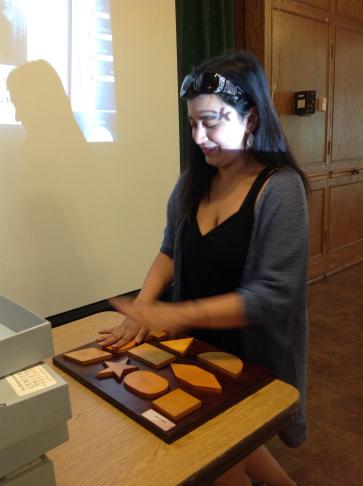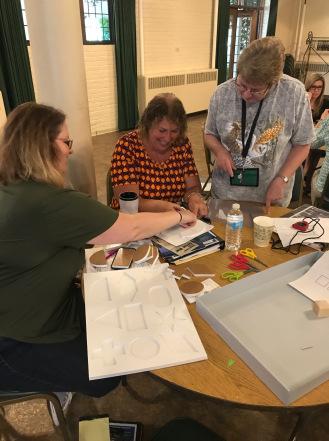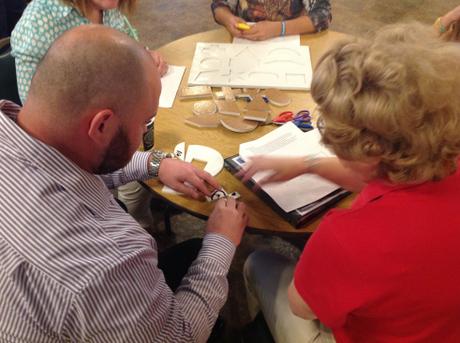Contributed by Jodi Kearns & Cathy Faye.
On June 29, 2017, we participated in a teacher workshop on immigration at Stan Hywet Hall & Gardens. Stan Hywet offers an educational program called “Meet the Staff” for middle school students to come with their teachers and learn about the staff who, around a hundred years ago, did the baking, cleaning, groundskeeping, horse training, and other house and garden jobs. Stan Hywet is the name given to the mansion built and owned by the Seiberling family. F. A. Seibering founded the Goodyear Tire and Rubber Company.
We prepared a lesson with portable, fabricated test kits to support teachers who bring their students to participate in “Meet the Staff.”
To begin our portion of the workshop, Cathy gave a brief history of psychological testing at Ellis Island and demonstrated with a volunteer each of the four tests we brought with us. Entry into the United States between 1892 and about 1942 required examinations of immigrants, including psychology testing. Cathy told the teachers
To be admitted to the United States in the early 1900s, immigrants had to be free from physical illness. They had to be capable of earning a living. But they also had to be free of “mental defect” and possess adequate mental ability. In the early 1900s, US immigration officials were therefore looking for a way to screen out “mental defectives” among the more than 5,000 immigrants that sought entry into the United States every single day. Congress had passed laws that barred “lunatics,” “idiots,” “imbeciles,” and “the feeble-minded” from entering the United States. These labels, used today as insults, were at the time diagnostic categories, indicating varied levels of intelligence. For example, a “moron” was anyone who scored 70 or below on standard intelligence tests of the day.
After initial inspection, some immigrants were triaged into a separate line for further inspection, which involved a battery of psychological tests that were designed to be useful in cases where language skills were a barrier. The three tests used at Ellis Island that we demonstrated for the teachers are Cube Imitation Test; Form Board Test; and Feature Profile Test.

An Akron-area teacher demonstrating the Form Board Test.
After a brief history and demonstration on the original artifacts, Jodi told the teachers that they would come to their classrooms and teach this lesson on Ellis Island psychological testing. In order to do this, we fabricated each of the tests using foam core and wood. Additionally, we recreated the tests with administration and scoring instructions on paper, so each students can have a turn being both tester and immigrant.

To the left, a teacher works on the Form Board Test. To the top, another works on the Feature Profile Test. In the blue box, notice the edge of the Cube Imitation Test. This test kit shows examples of the fabrications of the original tests.

Teachers working on the Feature Profile Test.
Finally, we wrote a full lesson plan and mapped the learning objectives to the Ohio Department of Education standards for social studies, to the American Library Association standards for information literacy, and to the American Psychological Association standards for teaching high school psychology. Teachers can use the lesson and test kits on their own, or invite us to come join them. Have a look at the lesson plan: EllisIsland_LessonPlan_Final.
